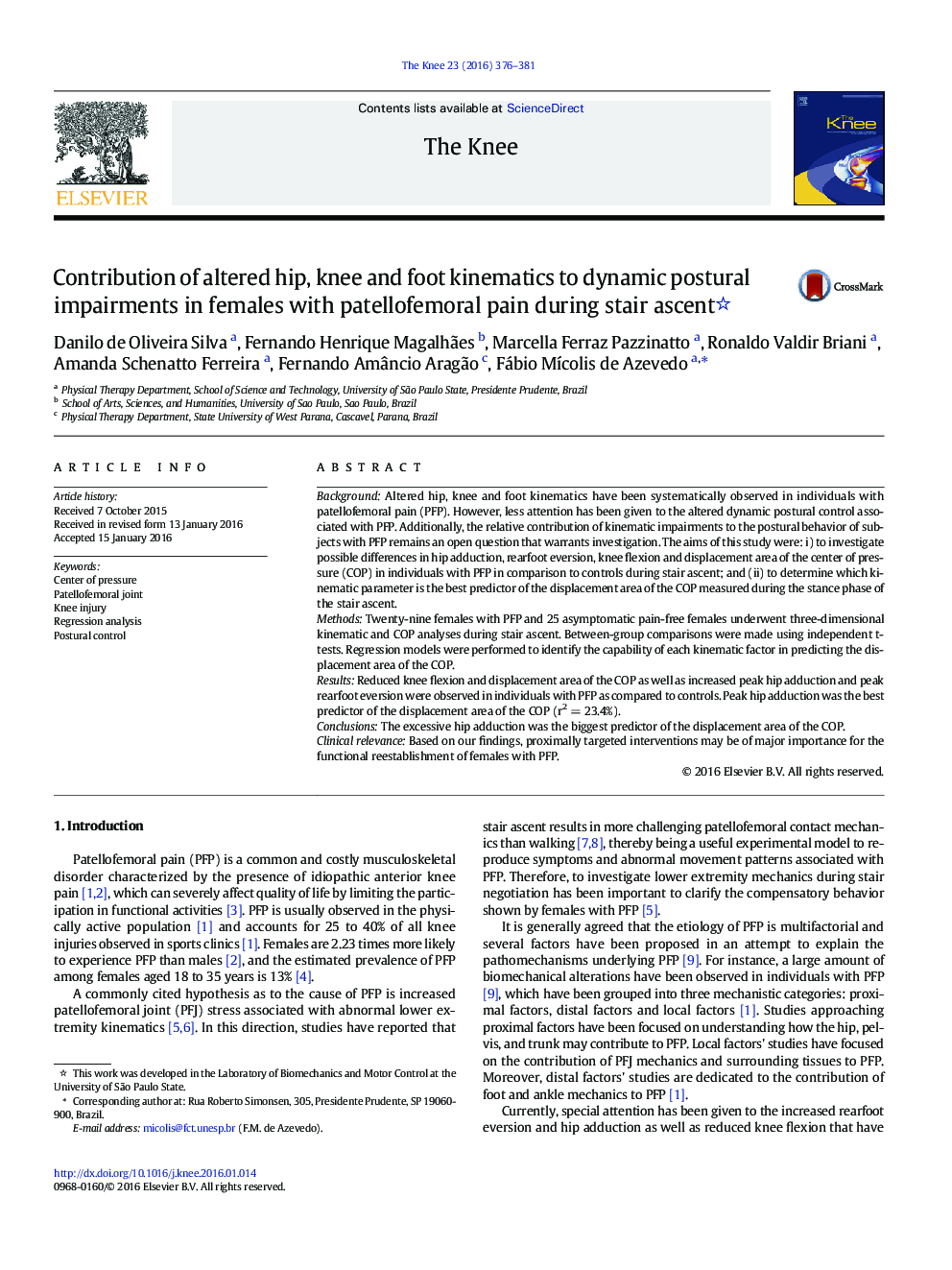| کد مقاله | کد نشریه | سال انتشار | مقاله انگلیسی | نسخه تمام متن |
|---|---|---|---|---|
| 6211109 | 1267205 | 2016 | 6 صفحه PDF | دانلود رایگان |
- Females with PFP present dynamic postural impairments during stair ascent.
- Peak hip adduction was the best predictor of the displacement area of the center of pressure.
- Hip interventions may be effective in reestablishing dynamic postural control of subjects with PFP.
BackgroundAltered hip, knee and foot kinematics have been systematically observed in individuals with patellofemoral pain (PFP). However, less attention has been given to the altered dynamic postural control associated with PFP. Additionally, the relative contribution of kinematic impairments to the postural behavior of subjects with PFP remains an open question that warrants investigation. The aims of this study were: i) to investigate possible differences in hip adduction, rearfoot eversion, knee flexion and displacement area of the center of pressure (COP) in individuals with PFP in comparison to controls during stair ascent; and (ii) to determine which kinematic parameter is the best predictor of the displacement area of the COP measured during the stance phase of the stair ascent.MethodsTwenty-nine females with PFP and 25 asymptomatic pain-free females underwent three-dimensional kinematic and COP analyses during stair ascent. Between-group comparisons were made using independent t-tests. Regression models were performed to identify the capability of each kinematic factor in predicting the displacement area of the COP.ResultsReduced knee flexion and displacement area of the COP as well as increased peak hip adduction and peak rearfoot eversion were observed in individuals with PFP as compared to controls. Peak hip adduction was the best predictor of the displacement area of the COP (r2Â =Â 23.4%).ConclusionsThe excessive hip adduction was the biggest predictor of the displacement area of the COP.Clinical relevanceBased on our findings, proximally targeted interventions may be of major importance for the functional reestablishment of females with PFP.
Journal: The Knee - Volume 23, Issue 3, June 2016, Pages 376-381
